Subphylum Vertebrata | Phylum Chordata Class Reptilia Suborder Serpentes Rank Species | |
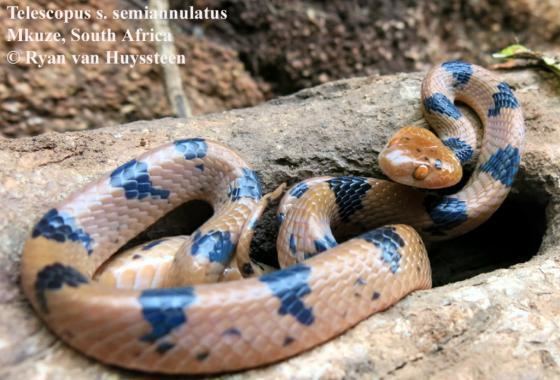 | ||
Similar African Tiger Snake, Crotaphopeltis, Crotaphopeltis hotamboeia, Atractaspis bibronii, Lycophidion | ||
My telescopus semiannulatus
Telescopus semiannulatus, commonly known as the African tiger snake, tiger snake, tiger cat snake, or striped cat snake is a species of rear-fanged colubrid snake.
Contents
- My telescopus semiannulatus
- Geographic range
- Description
- Subspecies
- Habitat and behaviour
- Venom
- Diet
- Captivity
- Breeding
- References
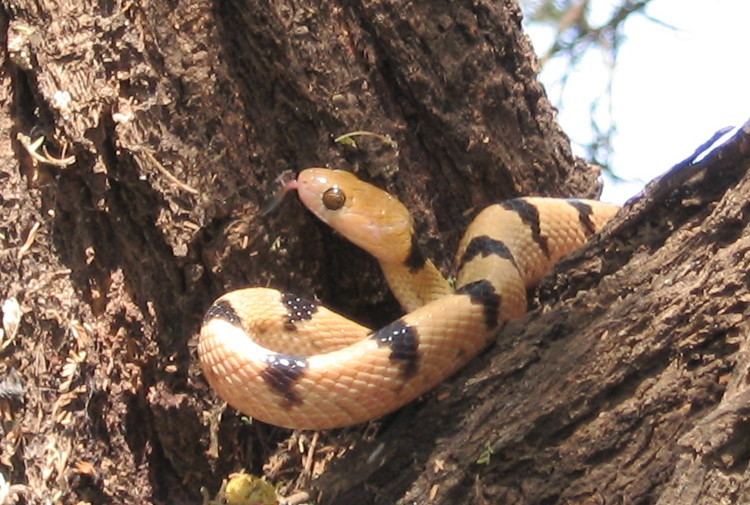
Geographic range
It is found throughout central, eastern, and southern Africa, from Congo to Tanzania to South Africa.
Description
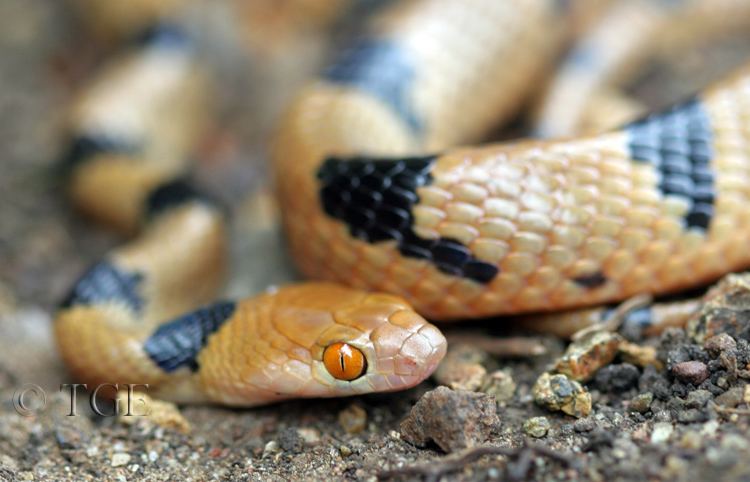
Adults average 60–90 cm (2.0–3.0 ft) in total length, with 17–21 rows of dorsal scales. The tiger snake is one of the more colorful species of snake in the family Colubridae. The upper side is pale orange to salmon pink in color with 24–48 black or dark-brown cross bars or blotches along the back and tail; the underside is pale yellow to orangish pink along the throat, paler along the rest of the body. It has a distinct head and large orange eyes with vertical pupils, and a narrow body with long tail.
Subspecies
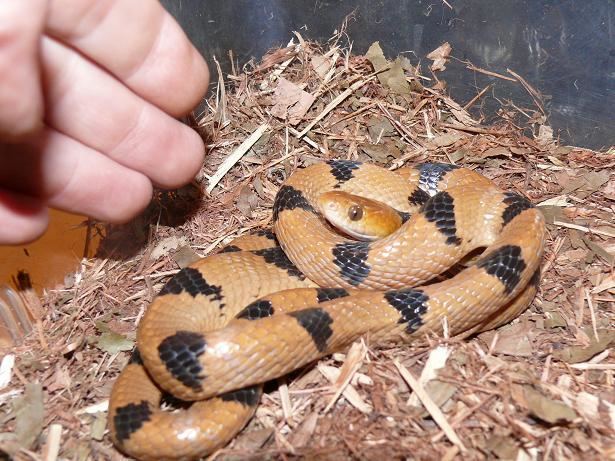
The Damara tiger snake, subspecies T. s. polystictus, is found in the highveld of Namibia, has a more mottled appearance and more black bands (up to 75), and may be a separate species.
Habitat and behaviour
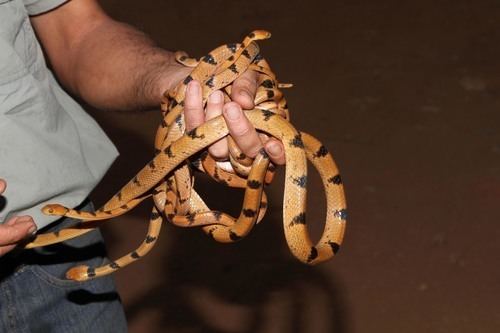
Telescopus semiannulatus is found in both dry and humid subtropical and tropical habitats, from rocky desert, scrub and savanna, to lowland forest. Largely terrestrial but sometimes arboreal, it shelters under bark and rock or in thatched roofs. It is a nocturnal snake.
Venom
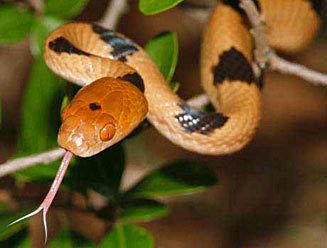
Telescopus semiannulatus is rear-fanged and mildly venomous, but not dangerous to humans. Localized swelling might occur. Because Telescopus semiannulatus feeds mostly on lizards, the venom is more effective on other reptiles.
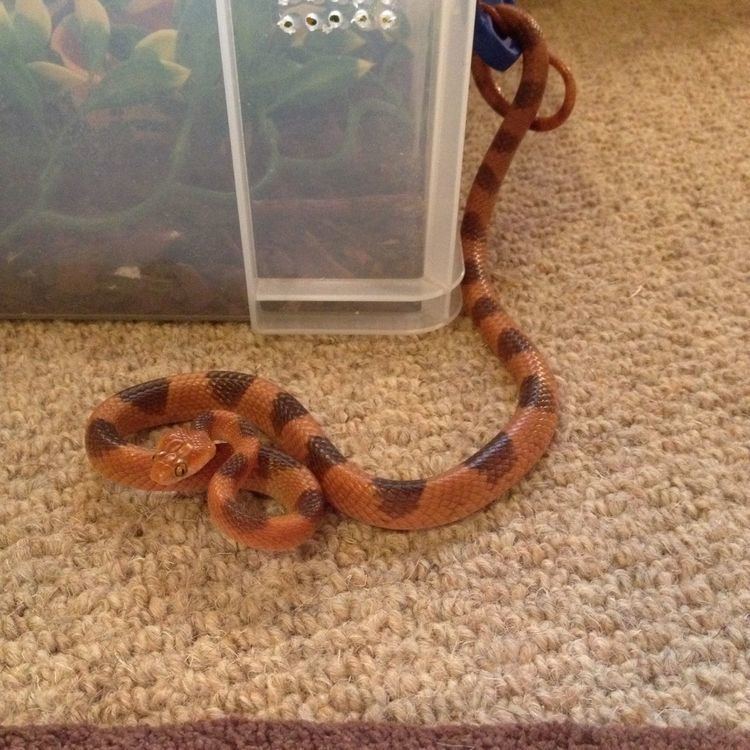
The fangs are grooved, instead of hollow, like most venomous snakes. When Telescopus semiannulatus grabs onto its prey, it holds on and chews venom into the wound, adding constriction to immobilize prey.
Diet
Its diet is largely lizards, especially geckos, but also small rodents and fledgeling birds and bats.
Captivity
Initially T. semiannulatus strikes readily, but the venom is not dangerous to humans, and it tames quickly. In captivity it accepts geckos while larger individuals will take half-grown mice. Even smaller animals are eating fresh born mice. In captivity it gets really calm and is interested in the things that happen around.
Breeding
The tiger snake is oviparous. Females lay half a dozen to several dozen eggs in damp leaf litter.
